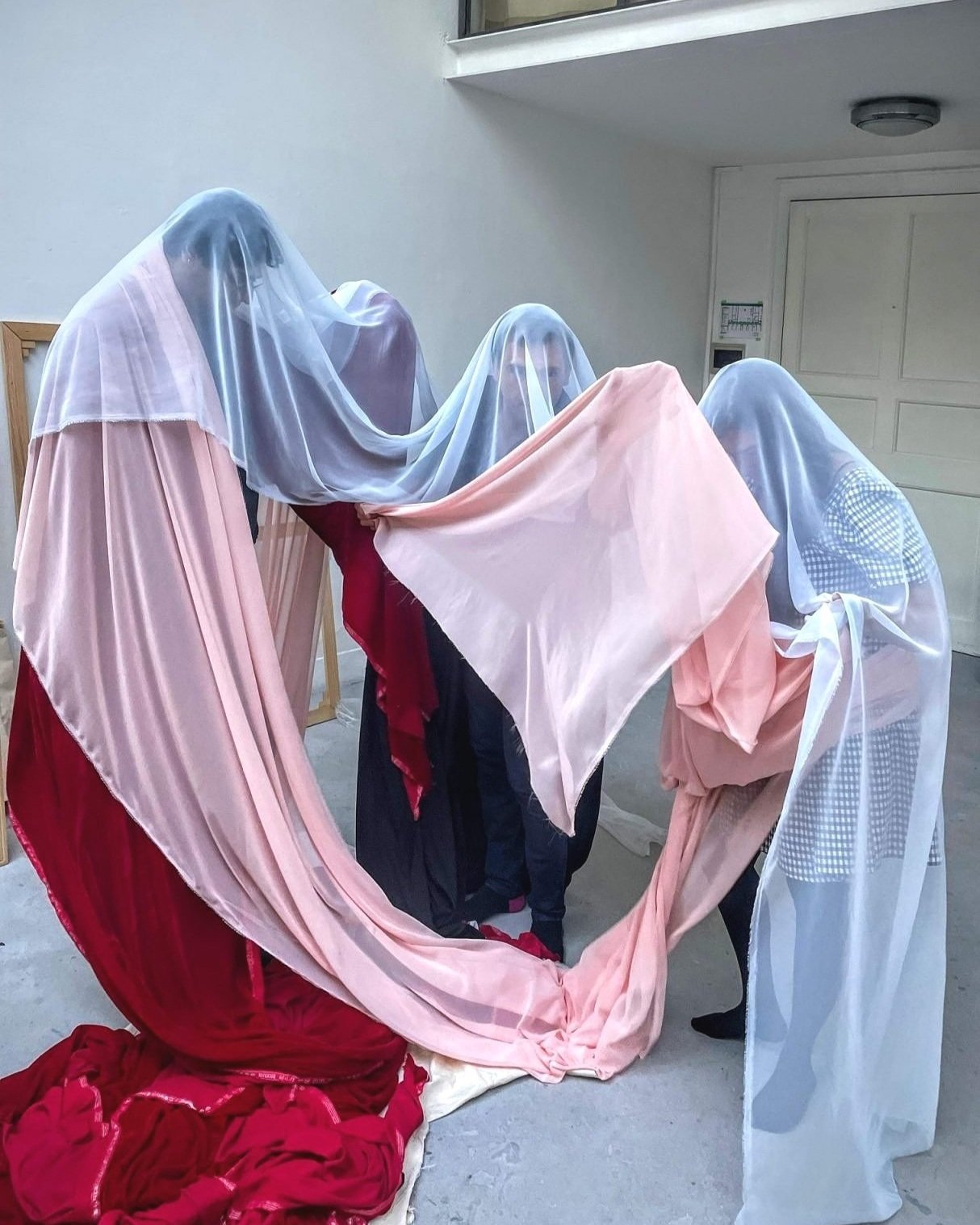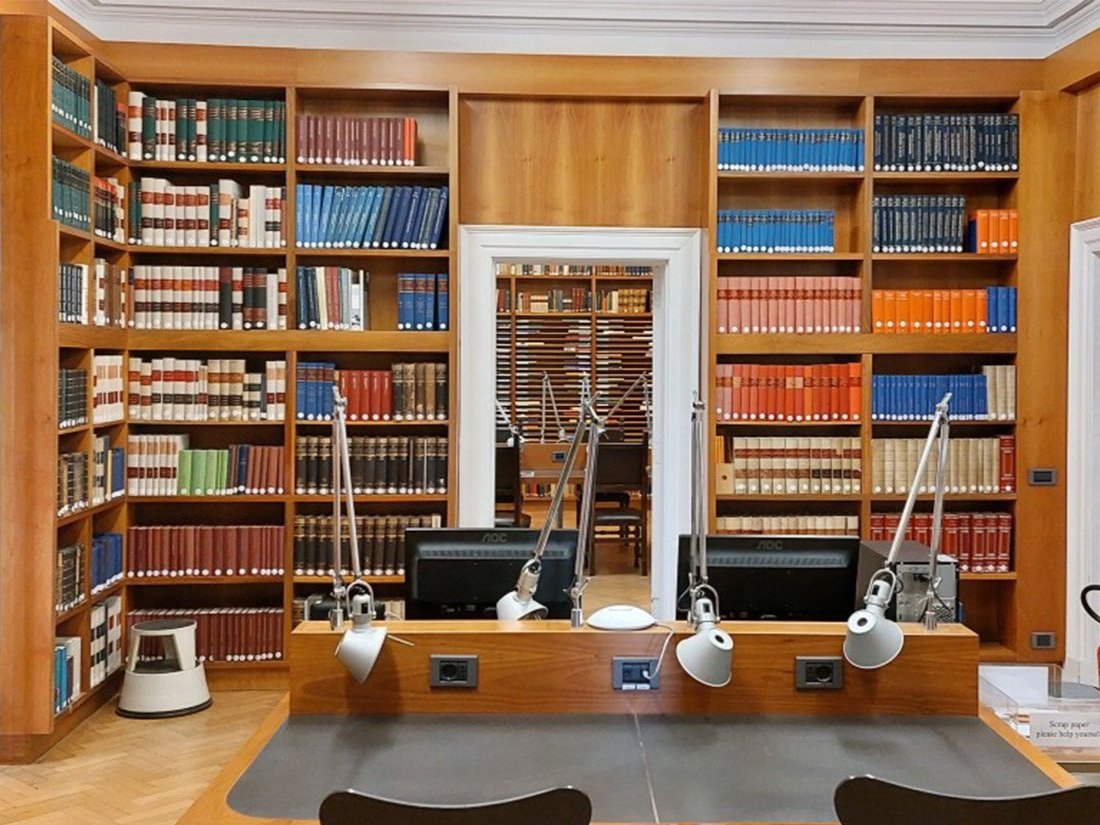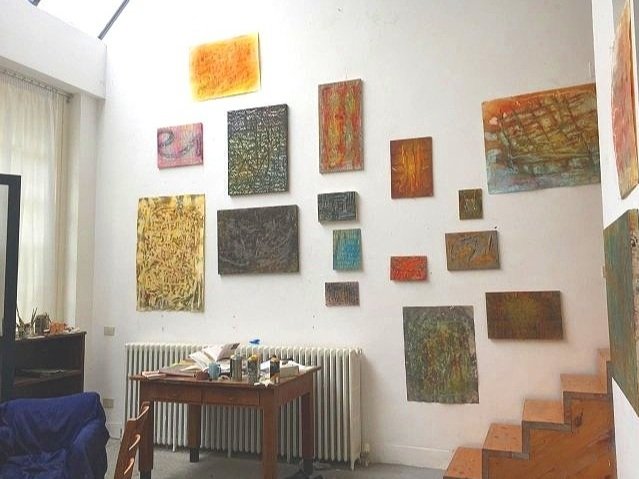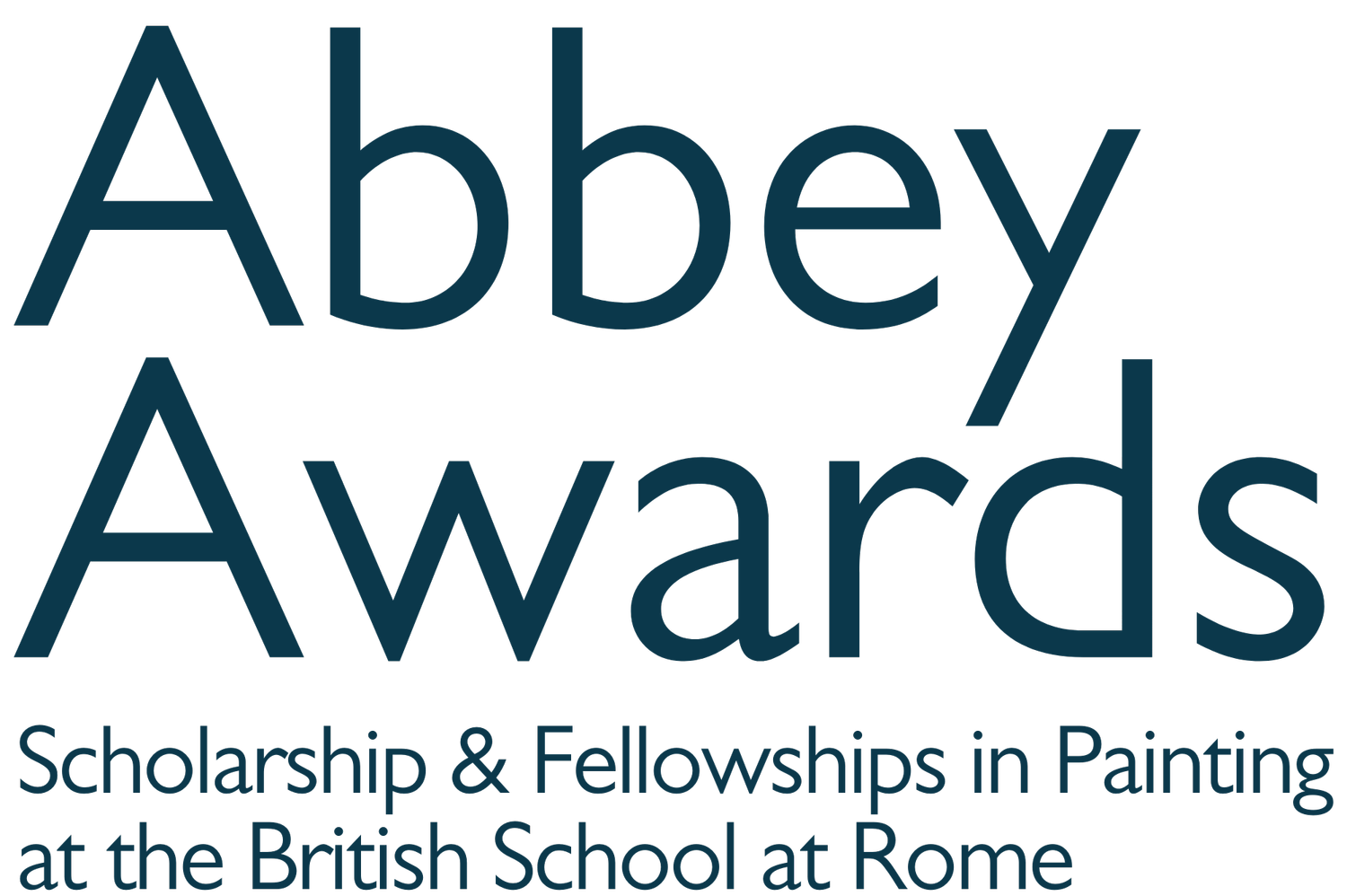
" Verve" in the BSR Foyer, Bridget Riley

The Courtyard

Andro Semeiko, Abbey Fellow 2022 experimenting with historians Hardeep Dhindsa and Victoria Witkowski.

Library view

Studio view, Gabriel Hartley, Abbey Fellow 2018
Life at the British School at Rome
Artists are accommodated in seven spacious live/work mezzanine apartments laid out around a peaceful green courtyard. There is shared kitchen and all main meals are served communally in a refectory dining room.
The specialist research library and photographic archive is accessible to artists at any time and open for study 24 hours a day. It houses more than 100,000 volumes and periodicals on Italian art, architecture and archaeology.
Here in the heart of Rome, a renowned interdisciplinary research community of independent artists and scholars thrive on the opportunity to meet and share ideas.
The residencies are supported by Fine Arts Programme Curator, Marta Pellerini, and artists are often invited to join visits to the incredible wealth of historical sites and visual culture in Rome and excursions to other parts of Italy, many of which are closed to the general public.
There are opportunities to take part in Open Studios, attended by Roman and Italian artists, curators and gallerists. The BSR also has its own gallery where exhibitions (mostra) are held, hosting a diverse programme of public talks, events and screenings.
-
The BSR was founded in 1901, principally as a centre for archaeological research. It received its Royal Charter in 1912, based on a constitution drawn up by the 1851 Commissioners (who administered the funds resulting from the Great Exhibition) and the Presidents of the Royal Academy and the RIBA. The Faculty of Archaeology, History and Letters was the original core of the School, but in addition there was to be a Faculty of Arts covering Architecture, Sculpture and Painting. The Rome Prizes in Architecture, Painting and Sculpture were established at this time.
In 1911, Sir Edwin Lutyens designed the British Pavilion for the Rome Exhibition of that year. After considerable alterations and rebuilding, the pavilion became the BSR’s permanent home.
